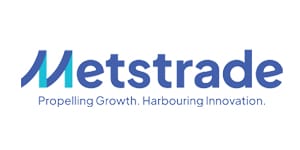ETNZ ship first AC40 to New Zealand

The world’s first AC40 is reportedly just weeks away from being shipped to its new base in Auckland.
“We didn’t hold back on the design,” says Dan Bernasconi, chief designer of Emirates Team New Zealand. “We took the IP of Te Rehutai and translated it into the best 40-footer we could create.”
The ‘pocket-rocket’ will be used in one design mode for both the women’s and youth events as well as being a testbed for further development of ETNZ’s mens’ America’s Cup boat.
ETNZ descried the AC40 as a ‘next-generation vessel’.
“It’s a step on in terms of hull form from the cup winning design of Te Rehutai,” says Richard Meacham, ETNZ team-member, “that adheres to all the fundamental rule changes implemented for the AC75s and we’re looking at performance estimates way in excess of our training boat, Te Kahu, or any of the other teams’ test mules that they ran in the lead up to AC36.”

The hull was built by McConaghy in China, which ETNZ knew was always going to be controversial, but Meacham is, luckily, impressed with the work.
“We assessed the situation early on in the project, but it was clear that that with the scale and timeframe of the overall build of the fleet of AC40s there was a shortage of boat-building labour for the hull builds in New Zealand, so we had to look overseas. McConaghy’s have been fantastic and very hard driving, but the key has been the Kiwi design and technology influence all the way through the process.”
The hull, foil arms, rudders, mechatronics, hydraulics, and programmable logic controllers have all come directly from ETNZ’s design teams, with the foil arms and rudders being created at ETNZ’s build facility on Auckland’s North Shore.
The boomless, double-skinned sails have been designed in collaboration with North Sails while the two-piece masts have been crafted by Southern Spars in Avondale, Auckland.

There are strict parameters and cost reduction measures with stipulations including: a maximum of four custom foil wings and four custom flaps.
Ten custom jibs and four mainsails are permitted to be built. Teams will also be allowed to build just one custom mast in addition to the two-piece supplied as standard.

Down below, the auto-pilot controls the ride height only and can be manipulated, holding the wing at a certain set point below the water. If the teams want to change the pitch angle or trim differently for conditions, then there needs to be manual intervention whilst all foil cant operations during the high-speed manoeuvres are controlled by direct input from the crew.
“One of the guiding principles of both the AC40 and AC75 projects is that they must be sailed, trimmed and set by the crew. Top speeds of the AC40s will be well into the forty-knot mark plus they will be optimised to fly faster and sooner in light airs – the same as with the AC75s,” says Bernasconi.
One of the big considerations for the AC40 global circuit is the ease of transportation. Each boat will be transported on a custom flat rack which can carry the whole boat and all appendages to save on shipping costs and increase transportation efficiencies.
With the first AC40 boat due to be sailing in the next few months and throughout the New Zealand summer, the subsequent AC40s will be rolling off the production line for the main teams in quick succession.
The AC40s will be returned to strict one-design for the fleet and match-racing formats for women’s and youth America’s Cups, but says ETNZ, the AC40s will really come into their own as a testing platform for the mens’ team.











